





RHODE ISLAND GENERAL AVIATION AIRPORTS Strategic Business Plan Executive Summary | 2022-2032 SFZ UUU BID WST OQU
A Message From Iftikhar Ahmad
Welcome and thank you for taking the time to peruse the Rhode Island Airport Corporation’s (RIAC) General Aviation Strategic Business Plan (GASBP) Executive Summary. The plan sets out the goals for the next ten (10) years for RIAC’s General Aviation (GA) airports. As our state’s GA airports are typically located inside of neighborhoods, RIAC strives to maintain a balance between promoting aviation growth and development as it remains sensitive to the concerns raised by the neighboring communities. To accomplish this multi-year undertaking, RIAC formed an internal task force comprised of community stakeholders, as well as experts in the fields of infrastructure, planning, finance, legal and property management, to provide input on business development opportunities and potential infrastructure needs.
The key components of the completed effort formulate an overall strategic business plan for the state’s GA airports which include:
• A ten-year Infrastructure Plan, which included the evaluation of building conditions andpriorities. The plan identifies scope, budget, schedule, and possible funding sources at each airport.
• A ten-year Pavement Plan that evaluated and adopted a pavement management schedule for each airport.
• An aerial survey that identified current and potential airspace obstructions for each runway end, as well as plans for obstruction removal.
• A ten-year Business Plan that evaluated economic development conditions and opportunities at all general aviation airports. This plan identified available properties that can be developed for shovel ready projects at GA airports.
The full plan, available at FlyRI.com, provides a predictable and equitable roadmap for stakeholders at each of the state’s five GA airports, and identifies priority projects for the next decade of capital improvements. The effort is expected to result in the investment of approximately $98 million into local airports over the next decade, which is estimated to produce an economic impact of $193 million for the State of Rhode Island.
We hope you will find this Executive Summary interesting and informative as we all look forward to the future and the continued development of aviation activity in Rhode Island.
Sincerely,
Iftikhar Ahmad President and CEO Rhode Island Airport Corporation

1
A Message From Our Chairman
On behalf of the Rhode Island Airport Corporation (RIAC), it is my pleasure to present this Executive Summary of RIAC’s 10-year General Aviation Strategic Business Plan (GASBP) for our state airport system.

RIAC has been working tirelessly to develop and implement this measured and comprehensive approach to improve the planning process, focus on future development efforts and financial performance for our state’s system of General Aviation (GA) airports. Our strategic GASBP reflects the input of town leaders, stakeholders, airport communities, and the expertise of experienced professional staff and consultants.
The GASBP identifies the long-term mission, vision, and goals of the state airport facilities and incorporates them into a 10-year capital planning and development effort. This effort has allowed RIAC to identify a feasible and sound strategy that will advance the success and financial sustainability of the GA airports throughout the state for years to come.
We expect this strategic plan will assist RIAC with the development of effective and relevant air transportation assets for the long-term benefit of the surrounding communities and the State of Rhode Island and look forward to working together with our community partners on these important initiatives.
On behalf of all of us at RIAC, I encourage you to review our Executive Summary of the General Aviation Strategic Business Plan.
Sincerely,
Jonathan N. Savage Chairman of the Board Rhode Island Airport Corporation

2
Our Vision
The Rhode Island Airport Corporation provides safe, convenient aviation gateways for New England.
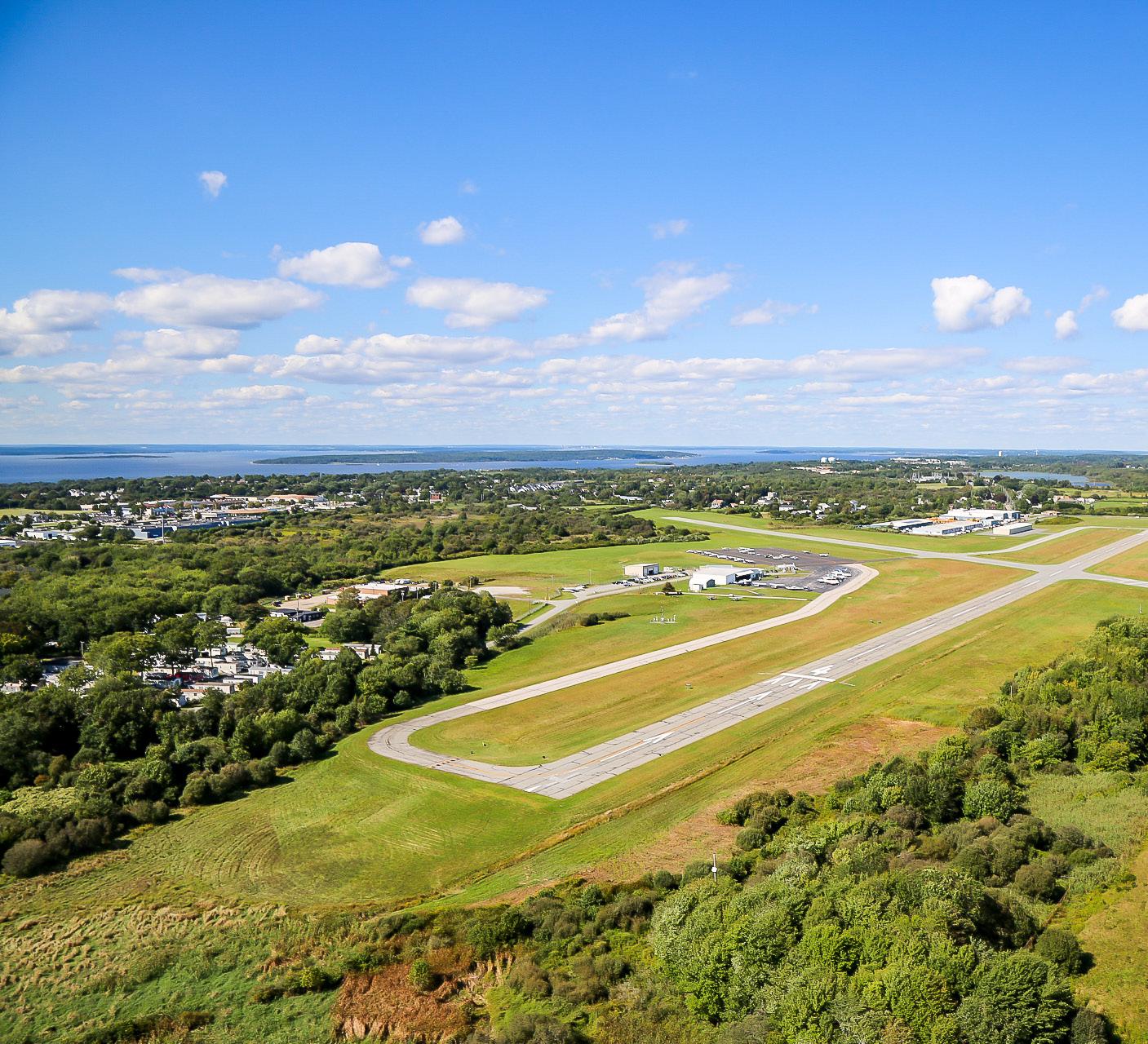
Our Mission
The Rhode Island Airport Corporation is a self-sustaining public agency that provides quality facilities for safe, secure, efficient, and convenient air transportation for Rhode Island and the New England region; by developing, promoting, and managing the airport system to stimulate the region’s economic growth; and by fostering a corporate culture that balances fiscal, civic, and environmental stewardship.
Our Values
• Continuous Improvement
• Customer Service Excellence
• Entrepreneurship
• Public Service
• Teamwork
3
Key Components of the Completed Effort
The following assessments and studies were conducted to identify short and long term infrastructure needs of Rhode Island’s General Aviation (GA) airports. The published plan provides a predictable and equitable roadmap for stakeholders at each of the State’s five GA airports, and identifies priority projects for the next decade of capital improvements.
A Ten-year Infrastructure Plan
The Infrastructure plan included the evaluation of building conditions and priorities. The plan identifies scope, budget, schedule and possible funding sources at each airport.
A Ten-year Pavement Plan
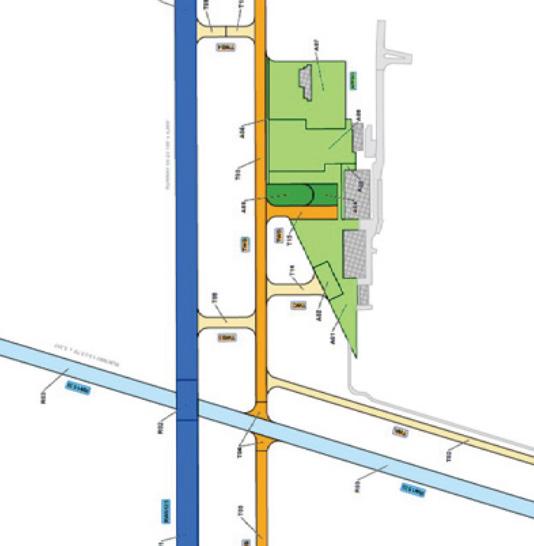
The Pavement plan evaluated and adopted a pavement management schedule for each airport.
General Aviation Assessments
A Ten-year Business Plan
The plan evaluated economic development conditions and opportunities at all GA airports. This plan identified available properties that can be developed for shovel ready projects.
An Aerial Survey
The survey identified current and potential airspace obstructions for each runway end, as well as plans for obstruction removal.

RIAC invests nearly $1.24 million in infrastructure planning at General Aviation airports.
Pavement Analysis
Airports must have a Pavement Management Plan (PMP) for pavement projects to be eligible for federal funding. The plan includes an assessment of airside and landside pavement conditions; recommendations for future pavement rehabilitation and/or replacement needs; and an estimation of project costs.
Building and Infrastructure Assessment

RIAC has also conducted an infrastructure assessment that assesses buildings and assets overall condition, other than pavements at GA airports. Other assets include buildings, fencing, electrical vaults, drainage, and recommendations for future infrastructure rehabilitation and/or replacement needs and estimates of project costs.
Airspace Analysis
In order to comply with FAA grant assurances, RIAC has also conducted an analysis and plan to mitigate off-airport airspace obstructions. The analysis identified existing and near term airspace hazards and is working with the FAA to take appropriate action to resolve over 1,800 data points, with an estimated mitigation cost of $7.3 million to resolve obstructions.
Business and Financial Plan
RIAC is also working with experienced GA consultants to identify opportunities to provide desirable airport amenities which can help provide financial sustainability for GA airports. Potential opportunities at the airports include aeronautical and non-aeronautical developments.

4
Rhode Island Airport Corporation Balances Diverse Interests of Stakeholders


The development plan for the Rhode Island Airport Corporation had to balance the varied perspectives of its diverse stakeholders, as illustrated through the stakeholders’ interests related to the topic of airspace hazard mitigation.
STAKEHOLDER
Preservation of Safe Airspace Bill Airspace Hazard Mitigation
Mandates Preservation of Safe Airspace Bill
Support/ Opposition of Litigation
Requires FMV for easement acquisitions
Federal Aviation Administration
Requires airspace hazard mitigation
Support/ Opposition of Airport Improvement
Issues federal $ for capital improvements
Exclusively controls all U.S. airspace
Controls federal $ funding for easements and obstruction removal
Rhode Island
Passed Airspace Bill
Required $92K be returned for obstruction removal design at WST State of
Passed laws mandating "airport zoning" to mitigate hazard areas in 1999
State Court issued injunction, preventing obstruction removal at WST
Airport Host Municipalities
Two of ten formally supported Preservation of Safe Airspace Bill
Seven of ten municipalities have not implemented airport zoning Without zoning, enforcement can be a challenge
No material support for the ongoing litigation
State RIDOT exercises condemnation on RIAC's behalf
Verbally supported development at airport, but may not support Preservation of Safe Airspace Bill or avigation easements
Pilots and Stakeholders
AOPA, RIPA, Skydive Newport and FlightLevel formally supported the Preservation of Safe Airspace Bill
Neighbors and Communities
Neighbors in WST filed lawsuit in March 2016 preventing hazard removal via condemnation
Support mitigation of airspace hazards
Did not respond to airport's request to join the lawsuit
Support capital investments
Mixed stances and positions
BID neighbors filed lawsuit against RIAC and tenant for nuisance and inverse condemnation from noise
Most do not support additional development
5
Business Assessment
The Rhode Island Airport Corporation assessed opportunities to decrease the financial reliance of its General Aviation (GA) airports on PVD subsidies.
The General Aviation Strategic Business Plan bridges the gap between near-term (1- to 5-year) financial planning and long-term (20-year) planning.
For more information, please visit flyri.com/riac/development-opportunities.
Fifteen commercially viable parcels, totaling nearly 150 acres were identified as available for development at the five GA airports. Appraised lease rates and highest and best uses for each parcel were defined to support the financial analysis.*
*Note: The above estimates have been updated since the January 2022 publication of the GA Airport Strategic Business Plan.
The development of the 15 parcels at the GA airports is estimated to generate over $2.3 million* of additional revenue annually by fiscal year (FY) 2030.

6
Rhode Island Airport Corporation Budget Federal Aviation Administration Airport Capital Improvement Plan General Aviation Strategic Business Plan Master Plan 1 year 5 years 10 years 15 years 20 years
Airport Number of Parcels Total Area (Acres) Range of Appraised Lease Rates (annual rates in dollars per square foot) Highest and Best Use BID 1 .77 $0.35-0.40 Hangar OQU 3 105 $0.10 – 0.25 Hangar SFZ 6 38.8 $0.21 – 0.30 Hangar, Solar UUU 2 3.67 $0.25 Hangar, Storage WST 3 2.6 $0.25 – 0.50 Hangar, Storage Total 15 150.8 Rhode
Island Airport Corporation, December 2020 (actual and budget) January 2021 (year-to-date FY 2021), July 2021 (Budget FY 2022), Ricondo & Associates, Inc., August 2021





General Aviation Airport Strategic Business Plan 24 | Page Figure 3-1: SFZ Aerial of Available Parcels 3.2.2 Quonset State Airport (OQU) There are two identified parcels available for development as described in Table 3-2, and depicted in Figure 3 2 General Aviation 25 | Page Table 3 Figure 3 Appraised Lease Rates ($psf/yr) $ Quonset/OQU $ $ General Aviation Airport Strategic Business Plan 26 | Page 3.2.3 Newport State Airport (UUU) There are two identified parcels available for development as described in Table 3-3, and depicted in Figure 3-3 Table 3-3: UUU Available Parcels for Development Figure 3-3: UUU Aerial of Available Parcels Airport Parcel Approx. Area (acres) Appraised Lease Rates ($psf/yr) Highest & Best Use Newport/UUU UUU-1 1.67 0.25 $ Hangar UUU-2 2.00 0.25 $ Block Island · BID 7 15 Parcels marketed since 2021 9 Parcels under lease + option to lease, to date $62.7M Potential lease revenue $16.6M Revenue under lease + option to lease, to date 150+/Acres marketed since 2021 45+/Acres under lease + option to lease, to date RIAC Marketed 15 Parcels at GA Airports Since 2021 and Contracted for $16.6M in Revenue Westerly · WST Newport · UUU Quonset · OQU North Central · SFZ Airport Parcel Area Details
Capital Programs at General Aviation Airports


 Quonset Runway 16-34 Design Meeting
New Fence at North Central State Airport Block Island Apron Expansion Area
Quonset Runway 16-34 Design Meeting
New Fence at North Central State Airport Block Island Apron Expansion Area
1. Runway 16-34 Design & Construction at Quonset ($62.9 Million)* 2. System-Wide Easement Acquisitons for Obstruction Removal ($2.5 Million) 3. Terminal Demolition Design & Construction at Quonset ($1.6 Million)* 4. Apron Expansion Design & Construction at Block Island ($3 Million)* 5. Apron Rehabilitation Design & Construction at Block Island ($1.96 Million) 6. Wildlife Fence Design & Construction at North Central ($1.7 Million) 7. Wildlife Fence Design & Construction at Westerly ($1.7 Million) 8. Apron Rehabilitation Design & Construction at North Central ($1.2 Million) 9. AWOS Design & Construction at Quonset ($650,000) 10. Hangar Electrical Upgrades Design & Construction at Newport ($300,000) 11. Enhancement of Safety at General Aviation Airports by Removing Obstructions ($275,000) 12. System-Wide Environmental Assessments for Obstruction Removal ($275,000) 13. Runway 4 Threshold Displacement Design & Construction at Newport ($69,000) Total: ($77.7 Million) * Updated cost as of 4/4/2023
Runway 16-34 Design & Construction at Quonset

Scope
This project reconstructs Runway 16-34. The project will include full depth runway reconstruction and associated electrical and storm water improvements and threshold changes to accommodate a full 1,000-foot safety area. The three phases of this project include design which is currently underway and two construction seasons through FY24.


Cost
$62.9 Million*
* Updated cost as of 4/4/2023
Project Location

9
Runway 16-34, which is utilized by local pilots as well as the Rhode Island National Guard, requires full reconstruction down to the runway base to ensure it can remain fully utilized now and for the foreseeable future.
System-Wide Easement Acquisitions for Obstruction Removal
Project Location
Scope
The project involves the purchase of negotiated airspace easements to remove obstructions within the runway approach surfaces to comply with Federal Grant Assurance 20, Hazard Removal and Mitigation. The program includes independent appraisals of the value of airspace easements, prepared in compliance with the regulations of the Federal Aviation Administration and the U.S. Department of Transportation.
Cost
$2.5 Million
1,967 Total Actual & Near Obstructions

Federal regulations require that RIAC address airspace obstructions presented by vegetation and growing trees with the potential to create hazards in airspace surrounding state airports.
Currently Under Contract
ARTICLE A: Environmental Assessments
ARTICLE B: Avigation Easement Acquisitions (OQU only)
Proposed Contract Amendment 1

10
ARTICLE C: Avigation Easement Acquisitions (PVD, SFZ, BID, UUU & WST)
ARTICLE D: On-Airport Design and Permitting (& off-airport for OQU)
ARTICLE E: Off-Airport Design and Permitting (2 phases)
BID PVD SFZ OQU UUU WST
Phase 1: SFZ, PVD & BID Phase 2:
UUU & WST
Terminal Demolition Design & Construction at Quonset
Scope
This project includes a conceptual study for demolition of an outdated and abandoned maintenance equipment facility at the Quonset State Airport (OQU) to allow the parcel to be used for new, aviation related development.

Cost
$1.6 Million*
* Updated cost as of 4/4/2023
Project Location

11
The demolition of an outdated airport terminal will provide an opportunity for additional aviation related development at Quonset State Airport.
Apron Expansion Design & Construction at Block Island
Scope
The proposed project includes expanding the terminal apron at Block Island State Airport (BID) to provide approximately 28,200 additional square feet of useable apron pavement to the west of the existing apron. The apron expansion will include unclassified excavation of existing ground, installation of new drainage, aggregate base course, asphalt pavement, and new aircraft tie-down anchors. The apron will provide approximately ten additional aircraft tie-down parking locations to help satisfy the airport’s demand.

Cost
$3 Million*
* Updated cost as of 4/4/2023
Project Location

12
Apron expansion at Block Island State Airport will help improve aircraft capacity as well as expand tie-down and parking locations during the higher volume summer season.
Scope
Apron Rehabilitation Design & Construction at Block Island Project Location
The project will consist of the rehabilitation of the terminal apron at the Block Island Airport. The project includes assessments, design, permitting and construction for rehabilitation of the aircraft apron.





Cost
$1.96 Million
13
The rehabilitation of the aircraft apron at Block Island State Airport was one of RIAC’s top priorities within the statewide general aviation airport capital improvement program.
Wildlife Fence Design & Construction at North Central

Project Location

Scope
The project involves design and construction of approximately 10,000 linear feet of new chain link fencing to enclose the airport perimeter, as well as the repair and replacement of approximately 9,000 linear feet of existing wildlife and security fencing to improve airfield safety.
Cost
$1.7 Million
14
Wildlife Fence Design & Construction at Westerly
Scope
The proposed project includes installation of new wildlife fence and improvements to the existing fence at Westerly State Airport and the installation of approximately 14,000 linear feet of new wildlife deterrent/security fencing and the replacement and repair of approximately 8,000 linear feet of existing fencing to im prove airfield safety and security.
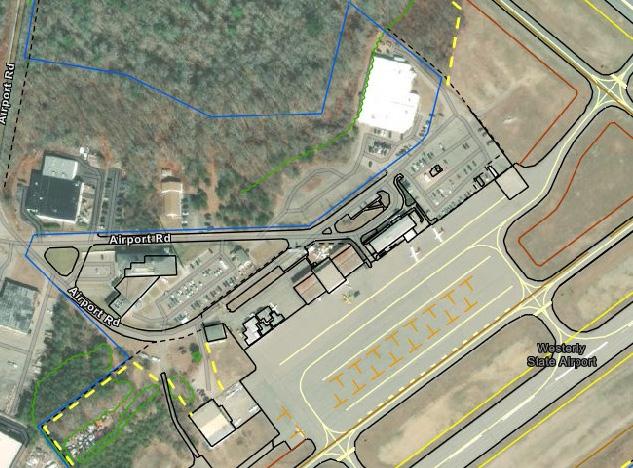

Cost
$1.7 Million
Project Location
15
Apron Rehabilitation Design & Construction at North Central


Scope
This project includes rehabilitating up to 80,000 square feet of apron pavement. Elements of the design include a comprehensive survey and geotechnical evaluations for the project site, including pavement, markings, storm water management, and construction phasing plans as well as all applicable permitting.

Cost
$1.2 Million
Project Location

16
The General Aviation Airport Strategic Business Plan process identified the need for aircraft apron rehabilitation at North Central State Airport.
AWOS Design & Construction at Quonset
Scope
The project includes planning and design services leading to the implementation of an Automated Weather Observation System (AWOS) III at Quonset State Airport (OQU), including site selection, FAA Airport Layout Plan revision and approvals, design, bid phase services. The AWOS provides important weather data to increase safety at the airport.

Cost
$650,000
Project Location

17
Design, construction and implementation of an Automated Weather Observation System at Quonset State Airport will enhance airport safety
Hangar Electrical Upgrades Design & Construction at Newport
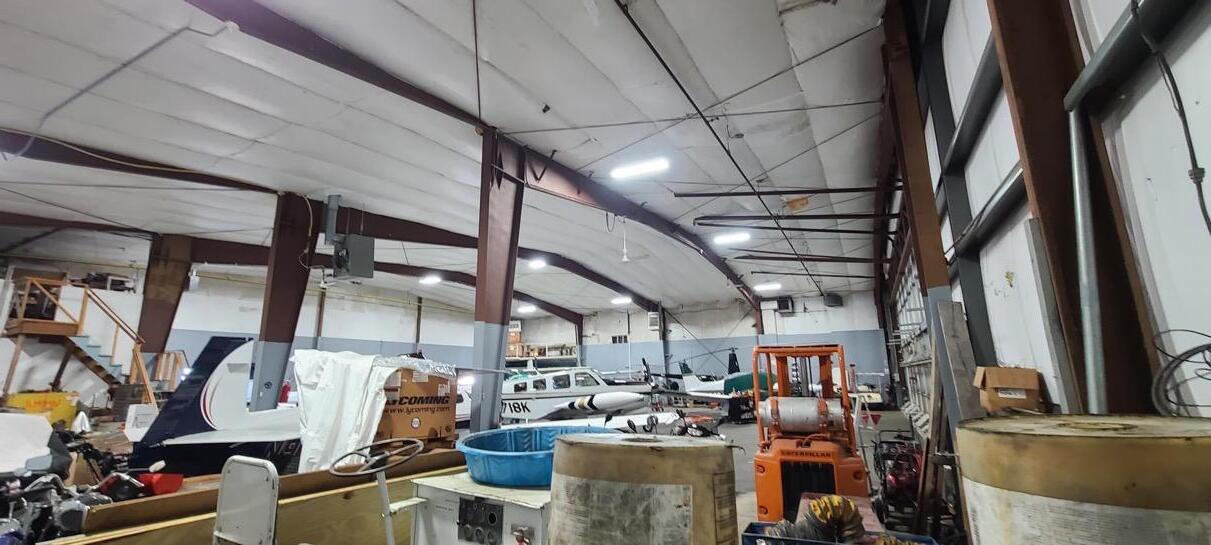
Project Location

Scope
The project consists of designing a new, upgraded electrical distribution system at Newport State Airport, including upgrades to the safety systems of the building. The design will also include the needed additional emergency egress lighting throughout the Hangar to comply with minimum emergency light levels.
Cost $300,000
18
Conditions in Newport State Airport Hanger before construction
Enhancement of Safety at General Aviation Airports by Removing Obstructions
Scope
Airspace obstruction assessments performed at General Aviation airports throughout the state identified the short, mid and long term priorities to address airspace hazards and ensure safe airports in keeping with federal regulations.

Cost
$275,000
Preservation of Safe Airspace Bill clarifies use of condemnation to protect runway approaches which will help prevent prolonged litigation and enhance safety

19
Project Location BID PVD SFZ OQU UUU WST
System-Wide Environmental Assessments for Obstruction Removal
Scope
The project involves Environmental Assessments at all state airports related to the identification and future removal of airspace obstructions in compliance with federal mandates related to airport safety and hazard removal.


Cost
$275,000
20
RIAC has undertaken a statewide environmental assessment related to the mitigation of airspace hazards at airports throughout the state.
Runway 4 Threshold Displacement Design & Construction at Newport
Scope
This project involves construction and pavement marking revisions related to new runway threshold locations with the goal of avoiding existing obstructions.

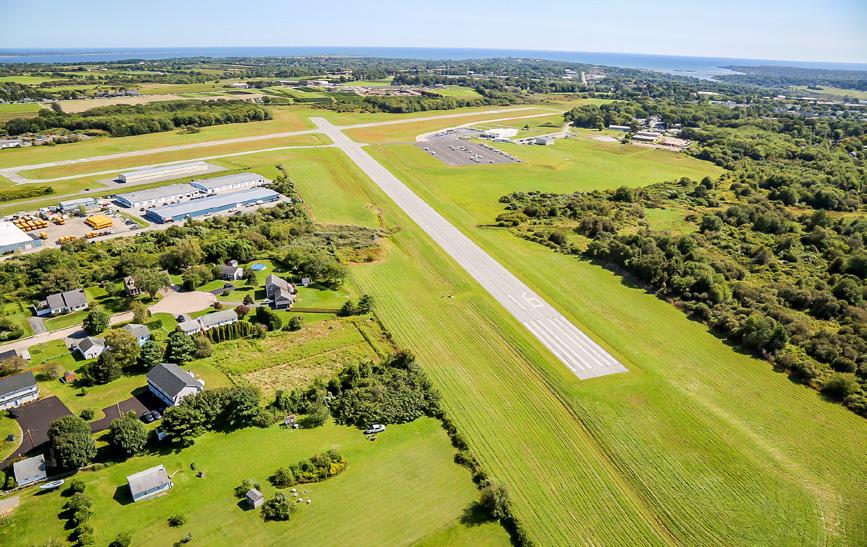


Project Location
Cost
$69,000
21
With pending litigation impacting the mitigation of an airspace hazard resulting from a growing tree, RIAC has been forced to relocate the runway threshold to ensure airport safety.
Quonset Revenue Producing Land




Opportunities for increased aviation and non-aviation related development at Quonset State Airport are expected to result in new jobs in new industries over the next several decades.




22
General Aviation Airports Communication Initiatives
In addition to RIAC’s active outreach to aviation stakeholders related to the GA Airport Strategic Business Planning process, RIAC has continued to enhance and expand GA airport stakeholder communications as airport improvement projects are implemented.



In addition to the 20 quarterly GA tenant meetings held for GA airports in FY22, RIAC also developed and distributed a new periodic GA Airport Newsletter. According to the Aircraft Owners and Pilots Association, RIAC is the only statewide airport authority in the east, and perhaps even the nation to have a newsletter focused solely on GA airport issues.
In FY22 RIAC has also hosted its first two “Town hall” GA airport meetings to provide an opportunity for members of the public and officials in GA airport host communities to learn more about airport activities and ask questions of RIAC personnel. RIAC has also recently integrated stand-alone URLs for each GA airport in our recent website redevelopment, providing each airport throughout the state has their own dedicated website, such as “flynewportairport. com” or “flywesterlyairport.com.” These improvements are all intended to better serve airport pilots, stakeholders and communities allowing all to better promote local airport information and services in their townships.
23
North Central State Airport – Ramp rehab walk through
Quonset State Airport – Northeast Offshore coordination meeting
Quonset State Airport – Construction meeting
General Aviation Airports Communication Initiatives


The State of Rhode Island recognized that it is necessary in the interest of the public health, safety and general welfare to prevent the creation of airport hazards by enacting the Airport Zoning statutes in 1946 (RIGL § 1-3 et. seq.). In 1999, it became mandatory under State law for the cities and towns having airports to adopt, administer and enforce airport zoning regulations to prevent the creation of such hazards. Currently, seven of the ten host cities and towns have not implemented the required airport zoning regulations.

Pursuant to federal law, the Federal Aviation Administration (FAA) has the exclusive authority over airspace—no airport operator may regulate aircraft in flight. Federal law known as “Part 77” governs the Safe, Efficient Use, and Preservation of the Navigable Airspace. Part 77 allows the FAA to identify potential hazards to aviation by defining protected surfaces around airports. Airport zoning regulations by host cities and towns are the prevention and enforcement mechanism to ensure that the Part 77 surfaces are protected.

24
General Aviation Airports Communication Initiatives



The airport zoning regulations are the first line of defense. The second line of defense is the voluntary easement acquisition program through the FAA wherein property owners are compensated for easements to remove obstructions. The third line of defense if the voluntary easement acquisition process is not successful is utilizing the right of eminent domain for the avigation easements which is utilized at airports across the country. In Rhode Island, a group of homeowners is currently challenging the State’s ability to exercise eminent domain for avigation easements. The fourth line of defense which is currently in place at Westerly and Newport State Airports is runway displacement. If obstructions cannot be removed from the protected surfaces, the FAA requires that RIAC displace the runway threshold which reduces the length of runway available for airport users. In order to obtain FAA funding for airport improvements, the FAA expects that the runway be returned to their full intended use.
The Obstruction Process
Westerly, North Smithfield, and Lincoln have overlay zones but Warwick, Middletown, Portsmouth, North Kingstown, New Shoreham do not currently have anything in place
25
The easements are needed per federal regulations to protect the Part 77 surface
Trees hinder the fly path and in absence of removing the trees in the fly path next to the runway, runway is shortened to protect the pilot and the neighbors
Town’s Zoning Protection of the Neighborhoods
FAA Buying Easements
Eminent Domain
Obstruction Removal
Authority held by State. Property owners at WST challenging in court.
Self-Sufficiency and Increase of Capital Investments at General Aviation Airports
The Rhode Island Airport Corporation (RIAC) has fostered increased capital investment while also improving airport operational efficiencies, resulting in reduced operational deficits at General Aviation (GA) airports while also significantly increasing capital investments to bolster the long term sustainability of state airports.
GA airports transitioned to a more efficient business model in 2018, resulting in a significant reduction in expenses per year. In the previous model, GA airports were maintained and operated by a 3rd party, with a pass through arrangement with no incentive to control costs. The current model includes a contract with FlightLevel Aviation that incentivizes increased activity and services for profit. In addition, RIAC receives rent and fuel flowage fees from FlightLevel. RIAC was able to significantly decrease the GA’s deficit and increase capital investment. The cost to airlines dropped from $3.9M in 2016 to approximately $1M in 2022. During the same period, capital investment increased from $882,000 in 2016 to $6.8M in 2022.
26
$1,635,781 $997,054 $1,578,667 $1,476,933 $1,801,633 $3,206,642 $3,103,575 $3,857,902 $6,876,000 $3,357,000 $1,823,000 $2,873,000 $382,000 $1,420,000 $882,000 $$1,000,000 $2,000,000 $3,000,000 $4,000,000 $5,000,000 $6,000,000 $7,000,000 FY 2023 estimate FY 2022 FY 2021 FY 2020 FY 2019 FY 2018 FY 2017 FY 2016 Capital Investment and GA Deficit FY2016 - FY2022 GA Deficit Capital Investment
The Rhode Island Airport Corporation thanks all stakeholders, that includes, elected officials, neighbors, businesses, pilots and city, state, and Federal partners for helping chart out the flight path for our General Aviation airports.
Rhode Island Airport Corporation solicited input from diverse stakeholders, during which the Rhode Island Airport Corporation assessed facility and pavement conditions at its general aviation airports and conducted extensive collaboration with numerous stakeholders.
GENERAL AVIATION STRATEGIC BUSINESS PLAN BY THE NUMBERS
$1.24M Cost of Assessments $98M 10-Year Capital Improvement Program
$193M Economic Impact for the State of Rhode Island

41 Stakeholders 18 Elected and Appointed Officials
9,000 Staff Hours
20 Notice to Public Meetings
28 Meetings
34,740 Emails
60 Documents on Webpage
30 Months
1,800 Pages of Studies
27

flyri.com 2000 Post Road, Warwick, RI 02886
























 Quonset Runway 16-34 Design Meeting
New Fence at North Central State Airport Block Island Apron Expansion Area
Quonset Runway 16-34 Design Meeting
New Fence at North Central State Airport Block Island Apron Expansion Area


























































